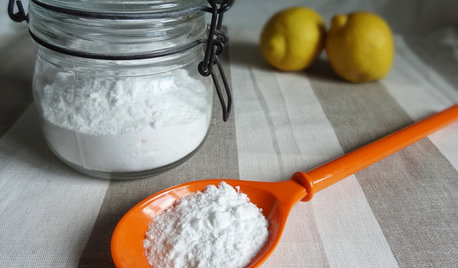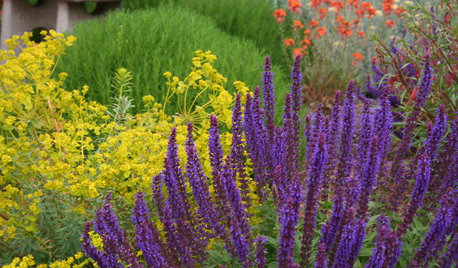Using Epsom Salts in already salty soils?
tweedbunny
16 years ago
Related Stories

GARDENING GUIDESThe Poop Scoop: Enrich Your Soil With Good Old Manure
Get over the ick factor already — this natural super-ingredient for soil has so many benefits, you'll wonder why you ever went chemical
Full Story
GARDENING GUIDESHow to Pick a Mulch — and Why Your Soil Wants It
There's more to topdressing than shredded wood. Learn about mulch types, costs and design considerations here
Full Story
FARM YOUR YARDHow to Get Good Soil for Your Edible Garden
The nutrients in your soil feed the plants that feed you. Here are tips on getting it right — just in time for planting season
Full Story
GARDENING GUIDESHow to Stop Worrying and Start Loving Clay Soil
Clay has many more benefits than you might imagine
Full Story
GARDENING GUIDESHouzz TV: Make a Worm Bin for Rich Soil and Happy Plants
A worm-powered compost bin that can fit under a sink turns food scraps into a powerful amendment for your garden. Here’s how to make one
Full Story
HOUSEKEEPINGBaking Soda: The Amazing All-Natural Cleanser You Already Own
Battle grime, banish odors and freshen clothes with this common nontoxic cupboard staple
Full Story
GARDENING GUIDES5 Bright, Cheerful Coastal Garden Flowers
Sandy soil and salty air don't have to mean a dry and dull garden — these 5 flowering plants are beautiful, vivid and remarkably sturdy
Full Story
GREEN BUILDINGWorld of Design: The Joy of Moss and Its Modern Uses
This great design plant is 400 million years in the making. See how it’s inspiring art, soothing spaces and building design
Full Story
GARDENING GUIDESLearn the Secret to Bigger and Better Roses
Grow beautiful roses using both ordinary and unusual soil amendments
Full Story
HOMES AROUND THE WORLDHousehold Habits and Customs to Borrow From Other Countries
Discover why salt may be the perfect house-warming gift, how to clean rugs in snow and why you should invest in a pair of ‘toilet slippers’
Full StorySponsored






sffog
petzold6596
Related Professionals
Belmont Landscape Architects & Landscape Designers · Forest Acres Landscape Architects & Landscape Designers · Aurora Landscape Contractors · Edmond Landscape Contractors · Clayton Landscape Contractors · Danvers Landscape Contractors · Ellensburg Landscape Contractors · Fort Mill Landscape Contractors · Gloucester Landscape Contractors · Hilo Landscape Contractors · Middletown Landscape Contractors · Olympia Landscape Contractors · Tuscaloosa Landscape Contractors · Uxbridge Landscape Contractors · York Landscape Contractorsdesertlvr
redneck_grower
petzold6596
redneck_grower
redneck_grower
petzold6596
redneck_grower